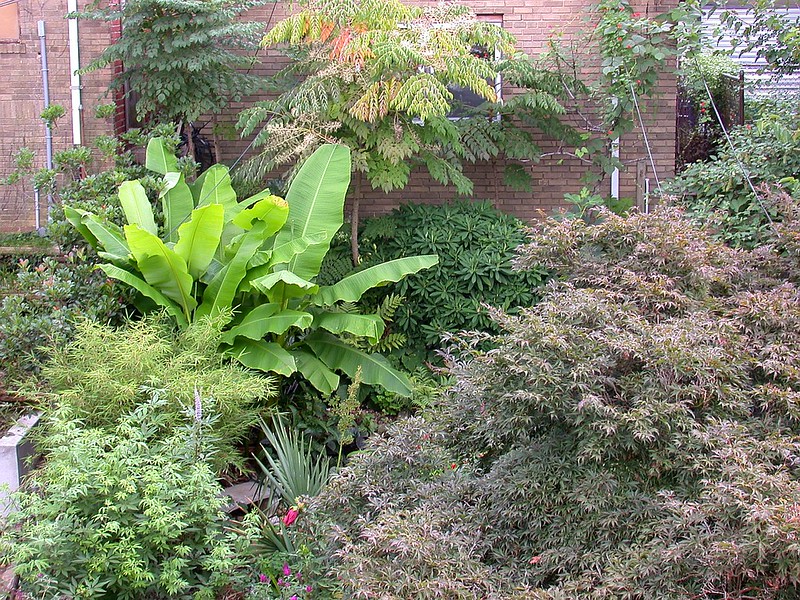
Garden, late August 2014
What's missing from this picture? Those of you who have been following my blog since last year (or who read the post title) probably have a good idea. But this photo from the same time last year really brings it home:
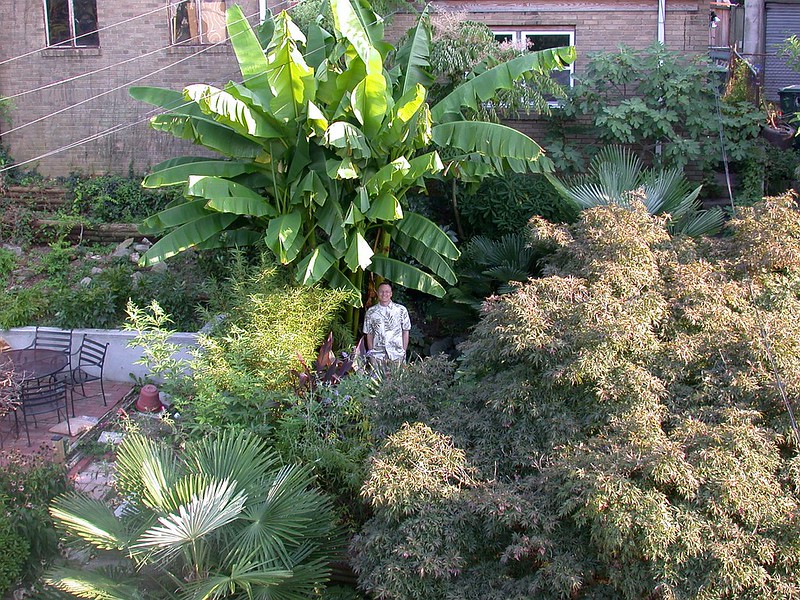
Garden, August 2013
Well, besides me, there are several things missing. For example the fig at upper right (see What to do with a dead tree) but more notably the windmill palms (Trachycarpus fortunei). At least the fig is putting out strong new growth from the base; no such luck with the palms. Most palms have a single growing point (the meristem) that produces all new growth, and once it's dead, the whole palm is dead. This photo from last November, after our first hard freeze, shows even more clearly how nice the palms looked at the end of last year:
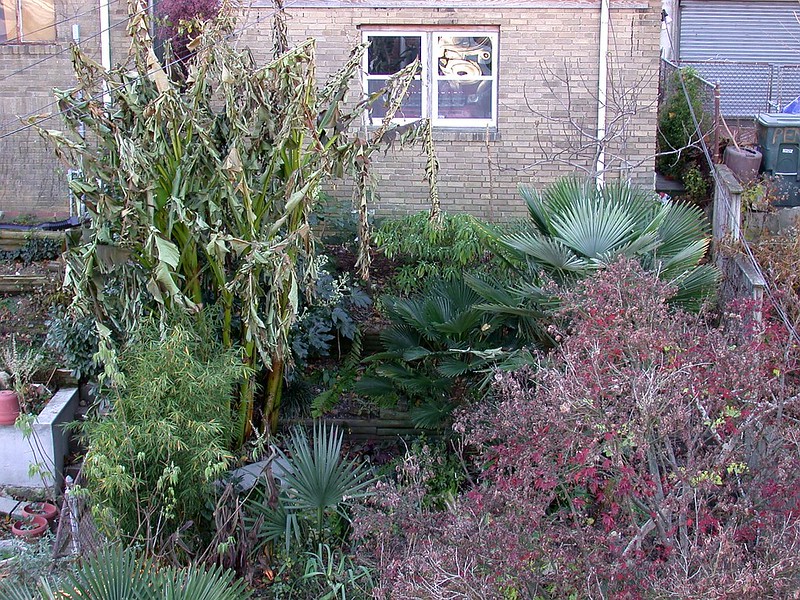
November 2013
And they looked so pretty in the first snow in early December! Palms are so darn hardy! we were all telling each other. Well, I've always been a bit cautious about saying that (for which I've gotten some flack from other local palm growers). I've always thought that windmill palms are marginal at best in our climate, and that after a series of warmer-than-average winters our palms were living on borrowed time. Nevertheless, I was determined to grow them without any protection because I wanted to find out how hardy they really are.
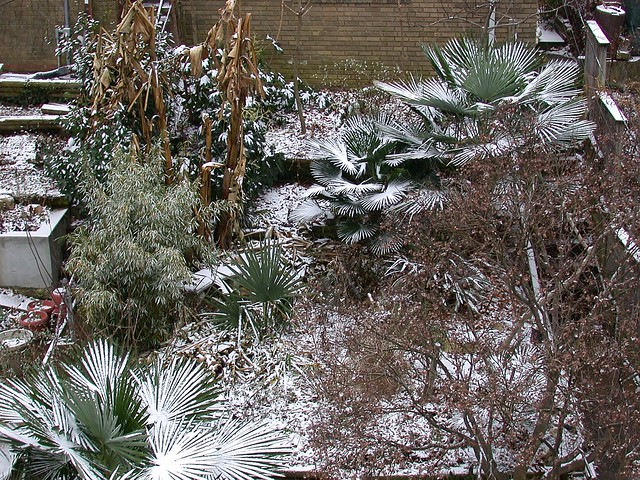
Palms in snow, December 2013
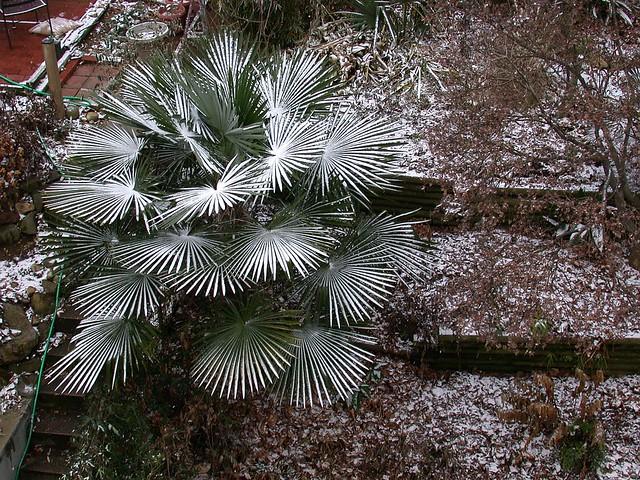
Trachycarpus fortunei "Bulgarian", early December 2013
In early January we got our first inkling that the coldest weather in over a decade might be coming our way, when I asked (rather presciently as it turned out), "Is this the apocalypse?" I only started this blog in October of last year, and as a beginning blogger, it was a bit frustrating to write post after post about the polar vortex and freeze-dried palms, with post titles like "Why bother?" and "Is my palm dead?" while the palms looked worse and worse. By early February this is what the palms looked like, although at this point I still had some hope that they would survive:
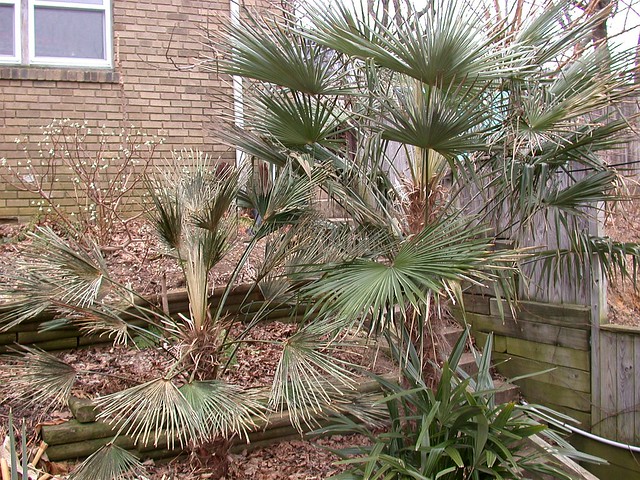
T. wagnerianus (left), T. fortunei "Nainital" (right), early February 2014
I've seen palms recover from damage like this; the problem is that they just kept looking worse as the winter went on. Hardiness isn't just about surviving a single low temperature; it's about frequency and duration of cold temperatures as well, and after that first "polar vortex" we had several more cold spells. And then in late March, just when it seemed spring had finally come, we had a freak late snowstorm that had me wondering, "Will summer ever come?
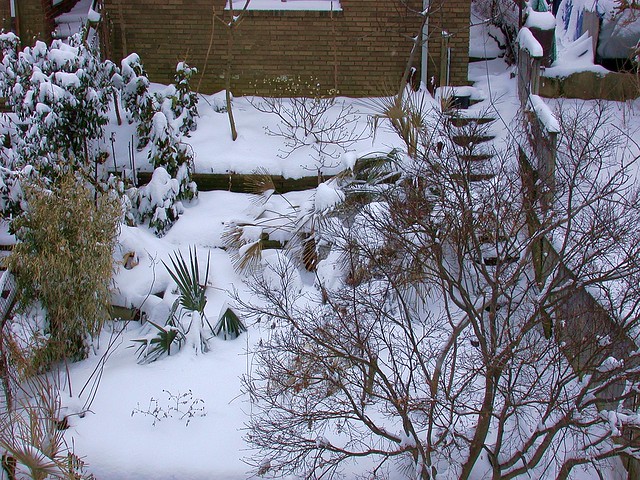
Garden, 17 March 2014
By late March, the garden was looking downright scary and it was clear that my windmill palms had taken a massive hit.
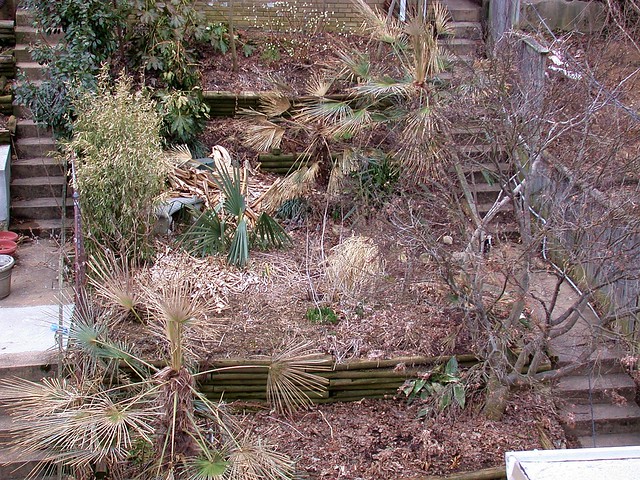
Garden, March 2013
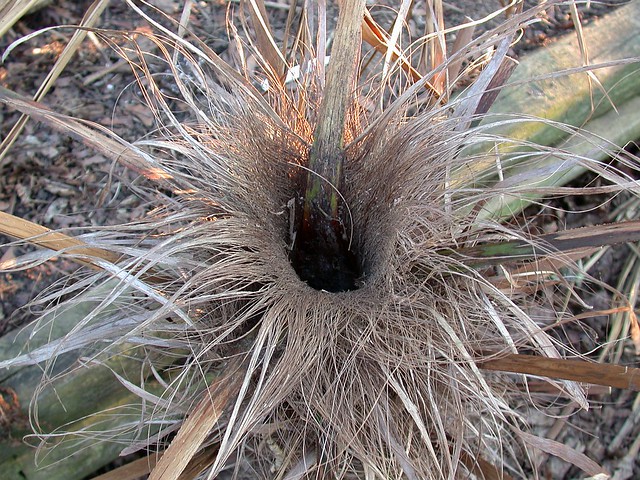
There's no recovering from this: Trachycarpus wagnerianus, spring 2014
When I asked earlier this year, "Is my palm dead?" the answer was basically "maybe, maybe not, you'll just have to wait and see." Well, now that we're well into summer, it's pretty obvious that two of my palms are dead: Trachycarpus wagnerianus and T. fortunei "Nainital". The waggie was probably my hardest loss, as I had grown it myself from seed planted in early 2001. At the time, this species (which is probably just a dwarf form of T. fortunei) was reputed to be slightly hardier than ordinary T. fortunei. This was not my experience; my three waggies were badly damaged by temperatures in the high single digits a few years ago that the T. fortunei "Nainital" right next to them shrugged off without any damage at all. Although they survived, they were so weakened that the following winter killed two of them.
I hoped the one survivor might be slightly hardier, and after several warm winters it had recovered nicely and was looking very healthy, but it was the first of my windmill palms to show damage after our low of 5 degrees (-15 C) during our first "polar vortex" in early January. I've taken many photos of my waggies over the years, but with the last one finally dead, this is where the adventure ends. Life goes on, and there are plenty of other plants to try in its place.
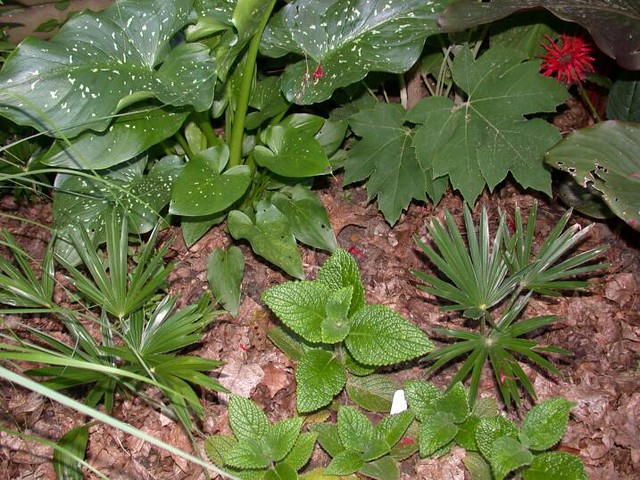
Waggie seedlings, summer 2003
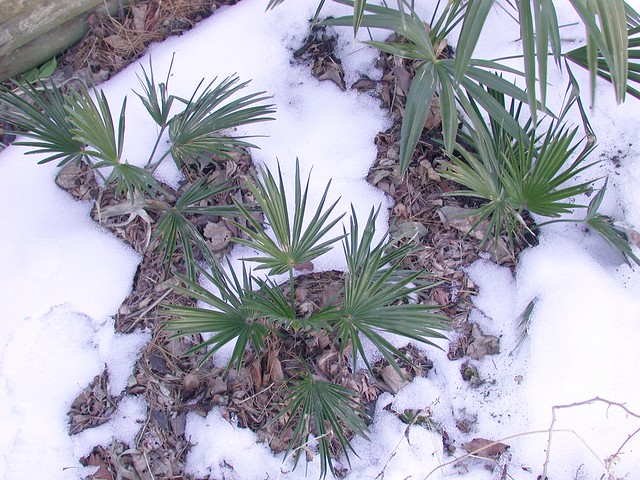
Waggies in snow, February 2005
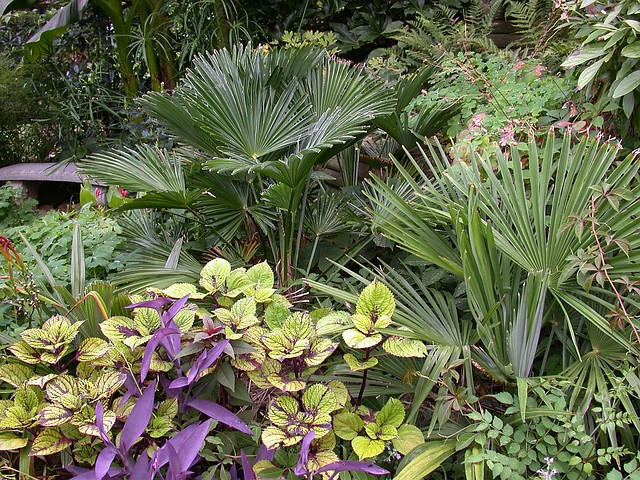
T. wagnerianus (left), T. fortunei "Nainital" (right), August 2008
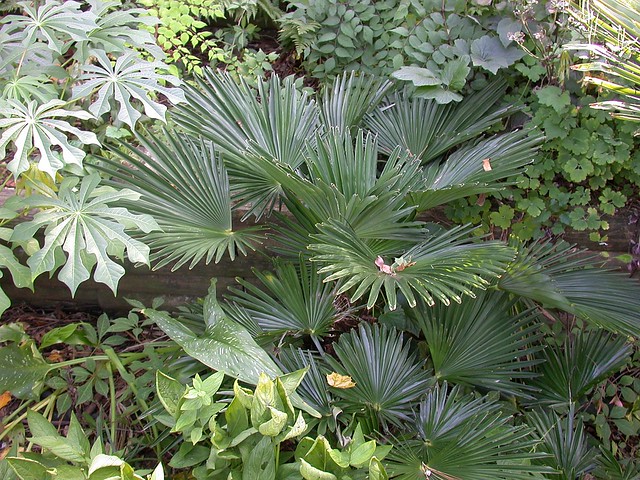
Waggies, October 2010
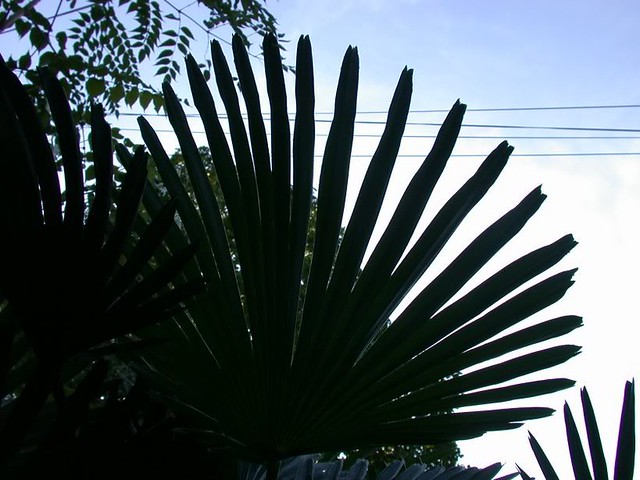
Waggie leaf silhouette

T. wagnerianus (left), T. fortunei "Nainital" (right), September 2013
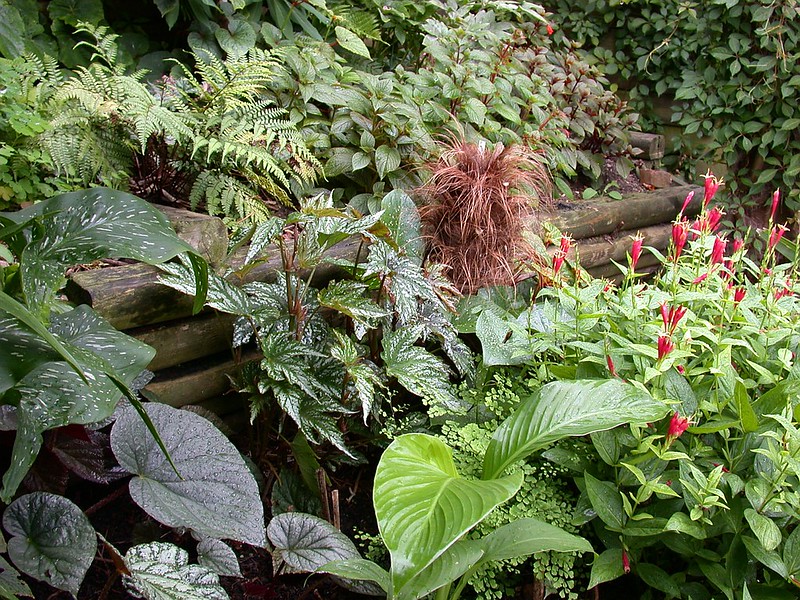
Trachycarpus wagnerianus, late August 2014
Trachycarpus fortunei "Nainital" (received as T. takil, which proved to be a misidentification) is likewise dead. This was a real surprise, because this plant had previously taken single digits with no damage whatsoever, and was my only windmill palm whose spear had never pulled. It came through our first freeze with a low of 5 degrees with minimal damage but although it never got that cold again, subsequent visits from the "polar vortex" took their toll and it looked progressively worse and worse. Here's a photo showing both of the dead palms; notice I'm using the "Nainital" as a post to grow Parthenocissus henryana:
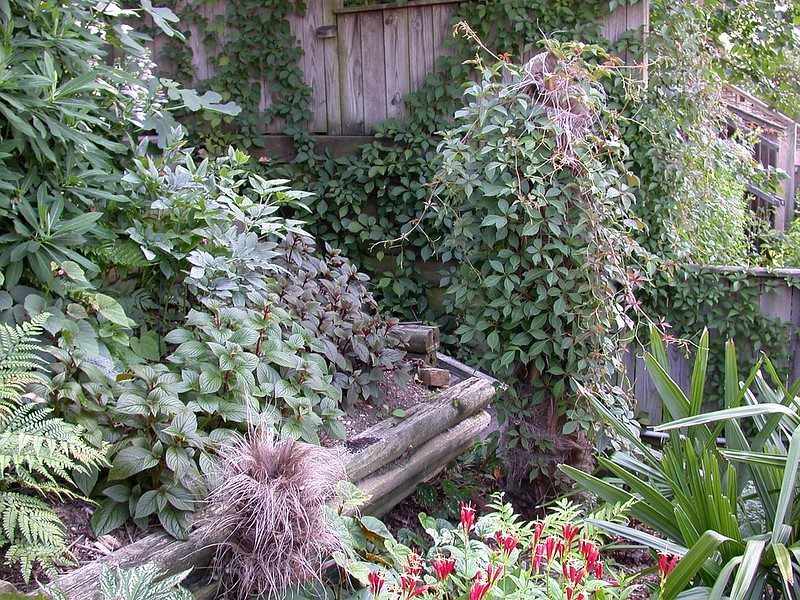
Dead palms, August 2014
This was ultimately my area's coldest winter in 20 years, and it definitely took its toll. But all is not lost! The garden shot below shows my one surviving windmill palm, T. fortunei "Bulgarian". It completely defoliated but is coming back (see "Bulgarian wins!"). In its weakened state, whether it makes it through another winter probably depends on how cold it gets. Let's all hope for a warm winter!
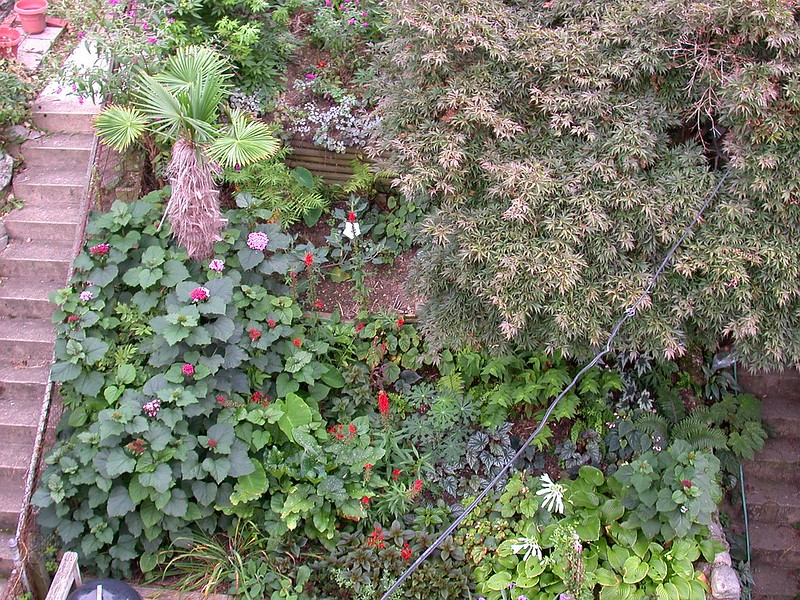
Garden, late August 2014
In a future post, I'll show photos of some of the other windmill palms I've documented in Washington, DC and discuss how they came through the winter. (The news isn't as grim as some might think!) In the meantime, I would love to hear how other gardeners' windmill palms did in the mid-Atlantic region so please share your experiences in the comments section!

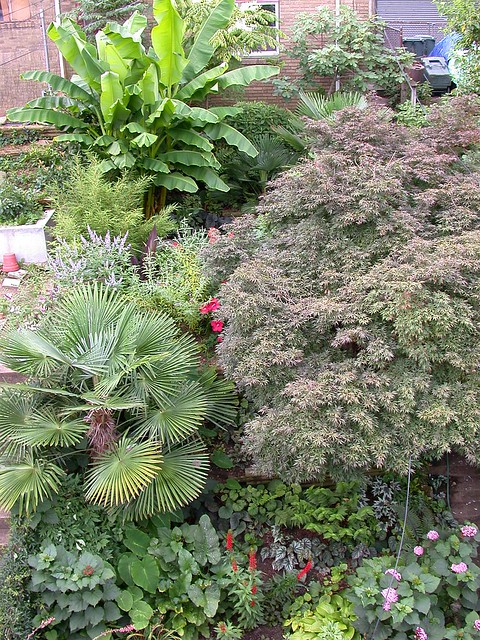
So, you are holding back. The verdict on the Sterling Palm is????????.....
ReplyDeleteBeats me. You're asking the wrong person, I've heard nothing whatsoever about it in quite some time.
Delete